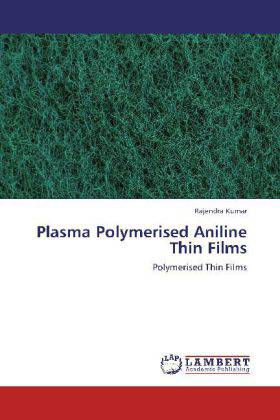
Je cadeautjes zeker op tijd in huis hebben voor de feestdagen? Kom langs in onze winkels en vind het perfecte geschenk!
- Afhalen na 1 uur in een winkel met voorraad
- Gratis thuislevering in België vanaf € 30
- Ruim aanbod met 7 miljoen producten
Je cadeautjes zeker op tijd in huis hebben voor de feestdagen? Kom langs in onze winkels en vind het perfecte geschenk!
- Afhalen na 1 uur in een winkel met voorraad
- Gratis thuislevering in België vanaf € 30
- Ruim aanbod met 7 miljoen producten
Zoeken
€ 64,45
+ 128 punten
Omschrijving
The objective of the book is to prepare polyaniline thin films through plasma polymerization technique and their electrical & optical characterization.It is also aimed to investigate their technological applications for detection of hazardous gas analyte such as NO2.To achieve this, we investigated the preparation of aniline thin film via plasma polymerization technique involving such as a brush-shape atmospheric pressure plasma source, low-pressure direct current(DC)plasma polymerization,and low-pressure radio frequency (RF)plasma deposition.Atmospheric pressure plasma brush was used to examine its sterilization and modification efficiencies of low-temperature plasma process without vacuum limitation required in traditional low-pressure plasma systems.The RF plasma deposition was produced on glass substrate for improving their scratch-resistance in optical applications. The conductivity of PANI thin films was also studied by their response characteristics after exposure to nitrogen dioxide.The results obtained has showed that the PANI thin film has tremendous sensitivity towards nitrogen dioxide vapors and shows a maximum response for a voltage of 3.5 volts applied to the sensor.
Specificaties
Betrokkenen
- Auteur(s):
- Uitgeverij:
Inhoud
- Aantal bladzijden:
- 64
- Taal:
- Engels
Eigenschappen
- Productcode (EAN):
- 9783848400140
- Verschijningsdatum:
- 24/02/2012
- Uitvoering:
- Paperback
- Afmetingen:
- 152 mm x 220 mm
- Gewicht:
- 104 g

Alleen bij Standaard Boekhandel
+ 128 punten op je klantenkaart van Standaard Boekhandel
Beoordelingen
We publiceren alleen reviews die voldoen aan de voorwaarden voor reviews. Bekijk onze voorwaarden voor reviews.









